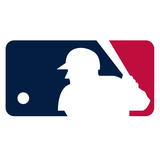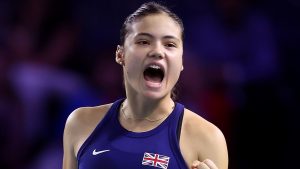MLB odds: How fielding percentage stats can give you a betting edge


By Edward Egros
FOX Sports MLB Betting Analyst
Summer School is officially in session!
Hopefully, you pored through your homework exploring Statcast data and applied your newfound knowledge to baseball betting. I also hope you have come with lots of questions. One query that comes up a lot is: “Why don’t we talk more about fielding?”
You’re in luck, that’s today’s subject!
Specifically, we’re going to discuss why fielding matters when betting individual games and when there may be opportunities to bet underdogs outright or on the run line. And, I’ll even through in some teams to bet on that fit the data.
It’s easy for us to quantify how good batters and pitchers are (e.g., a hitter has a batting average, a pitcher has an average exit velocity), but quantifying fielding is a more complex task. Antiquated statistics like fielding percentage and errors have several problems: each position has different standards for success, scorekeepers may be biased when assigning errors and infielders may have tougher assignments playing more ground balls.
The eyeball test can also be deceiving. What may look like a spectacular play with one fielder may look routine to another. The prime example is how data suggest Derek Jeter, despite an incredible highlight reel, was not a great defender.
Fortunately, newer statistics can objectively quantify the most reliable fielders and teams. Stats like Ultimate Zone Rating (UZR) and Defensive Runs Saved (DRS) have a lot of merits, but because we have discussed Statcast at length, let’s continue with their solution: Outs Above Average (OAA).
This statistic attempts to quantify how many outs a fielder saved above average fielding. Every batted ball is assigned an out probability. For an outfielder, variables include the distance traveled, and the time needed to make the catch. For an infielder, factors include how far the player is from the base when the ball is in the glove and how much time they have to throw the runner out. These probabilities for individual plays are then added (or subtracted) based on if the play was made to the overall score. We can then add up each fielder’s OAA to get a ball club’s total and compare which teams have the best defenses.
Why should we emphasize team OAA? Here are the top and bottom five ballclubs in OAA from last season and how they performed with their preseason win totals:
Team OAA O/U Preseason Win Total
1. Cardinals 51 Over
2. Astros 42 Over
3. Rays 32 Over
4. Rangers 28 Under
5. Giants 27 Over
26. Angels 25 Under
27. Nationals 28 Under
28. Orioles 33 Under
29. Reds 37 Over
30. Red Sox 39 Over
Not only is OAA a strong indicator for which ball clubs will hit their win totals, but this statistic is also more consistent from one season to the next than other defensive metrics. In other words, if a team has the same personnel the following year, their OAA probably will not change much.
While it’s fair to debate how much defense matters to a squad’s overall chances of winning a baseball game, there’s no disputing how underrated it is.
Here are a couple of teams that likely will have stellar fielding the rest of the season:
Houston Astros — Currently, this crew leads in OAA (20) with an outstanding collection of talent in the outfield: Jose Siri, Chas McCormick and Kyle Tucker. But, it’s the collective attack that separates this ball club. For instance, starting pitcher Framber Valdez has more groundball outs than anyone in baseball. Often these plays are routine, and yet, Jeremy Peña sits as MLB’s top defensive shortstop with eight OAA. Also, with a pitcher like Justin Verlander making life easy for his teammates, Houston’s defense should remain steadfast.
Tampa Bay Rays — This franchise has stressed defense for a long time, and it shows. However, losing Manuel Margot for a bit because of a hamstring strain has been a blow. Fortunately, he returned this week and should be a force at right field. Brett Phillips has also continued his dominance at center with more OAA (7) than any other outfielder.
On the flip side, here are a couple of teams where the fielding may prove lackluster for the rest of the season:
Philadelphia Phillies — It has been well chronicled that the newcomers would be defensive liabilities. So far, Kyle Schwarber and Nick Castellanos rank 108th and 113th in OAA (out of 118 outfielders), respectively. Combined, the Phils’ OAA is worst in the majors with -19. They are reaping what they are sowing.
Washington Nationals — They were in the bottom five last season, and they’re in the bottom five again with -22 OAA. One reason involves youth. With an injury to Alcides Escobar, Luis Garcia will take over at shortstop for at least the next few weeks. Though he has not played enough to qualify for Statcast numbers, in Triple-A he has struggled this season with eight errors and a below-average fielding percentage (.931).
Now let’s break down how to bet on these specific ball clubs. Because Houston is running away with the AL West, consider betting them in individual games on the moneyline. This approach should also work for Tampa Bay as they get healthier.
As for Philadelphia, the franchise fired manager Joe Girardi last week, so it may be worth believing in them again by betting on them to win the division. As big a lead as the Mets have, there is value on the Phillies at +1500 (via FOXBet). Lastly, side with the team playing against Washington in individual games.
When you are evaluating individual games with a sharp number and see one of these four teams involved, determine if the fielding component provides some direction one way or the other. It’s often the under-discussed elements of a sport that can uncover hidden edges.
Let’s get to work. Class dismissed!
Edward Egros is a sports analytics broadcaster/writer, a sports betting analyst, a data scientist and an adjunct professor of statistics at Pepperdine University. These passions have led him to become a cold brew aficionado. Edward previously worked in local television, notably at the Fox affiliate in Dallas covering the Rangers, Cowboys and high school football. Follow him on Twitter @EdWithSports.
Play FOX Super 6 every week for your chance to win thousands of dollars every week. Just download the Super 6 app and make your picks today!
Get more from Major League Baseball Follow your favorites to get information about games, news and more.







